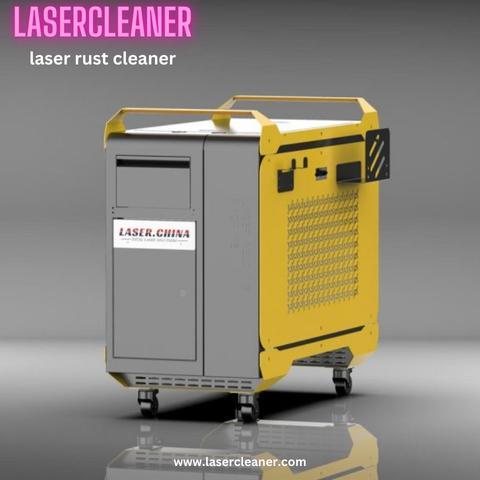Innovative solutions for rust removal have evolved, and one of the most effective methods is the laser rust cleaner. This technology offers a precise and efficient way to eradicate rust from metal surfaces without causing damage. In this guide, we'll delve into the workings of laser rust cleaner and provide a step-by-step approach for their optimal use.
Understanding Laser Rust Cleaners: laser rust cleaner utilize high-intensity laser beams to remove rust, paint, and other contaminants from metal surfaces. The laser energy is absorbed by the rust, causing it to vaporize and disintegrate without harming the underlying metal. This method is highly efficient, environmentally friendly, and leaves behind a clean surface ready for further treatment or finishing.
Step-by-Step Guide to Using a Laser Rust Cleaner:
-
Safety Precautions:
- Before operating the laser rust cleaner, ensure you have proper safety gear, including protective eyewear and gloves.
- Work in a well-ventilated area to prevent the accumulation of fumes generated during the cleaning process.
- Keep the work area clear of flammable materials and ensure there are no reflective surfaces that could redirect the laser beam.
-
Surface Preparation:
- Inspect the metal surface to be cleaned, ensuring it is free from any obstructions or loose debris.
- If necessary, use a wire brush or sandpaper to remove large rust flakes and loose paint before using the laser cleaner.
-
Adjusting the Laser Settings:
- Familiarize yourself with the laser rust cleaner's settings and controls.
- Adjust the power and focus of the laser beam according to the thickness of the rust and the type of metal being cleaned. Higher power settings may be required for thicker rust layers.
-
Laser Cleaning Process:
- Hold the laser cleaner's wand at a slight angle to the surface, approximately 1-2 inches away.
- Activate the laser beam and begin moving the wand slowly across the rusted area, overlapping each pass slightly to ensure thorough cleaning.
- Monitor the progress closely, adjusting the speed and angle of the wand as needed to achieve optimal results.
- As the rust is vaporized, it will turn into fine dust or debris that can be easily removed with a brush or vacuum.
-
Post-Cleaning Inspection:
- Once the cleaning process is complete, inspect the metal surface for any remaining traces of rust or contaminants.
- If necessary, repeat the cleaning process or use alternative methods to address any stubborn areas.
Conclusion: Laser rust cleaners offer a precise and efficient solution for removing rust from metal surfaces. By following this comprehensive guide and taking proper safety precautions, you can revitalize your metal surfaces with ease and confidence, ensuring they remain in optimal condition for years to come.

